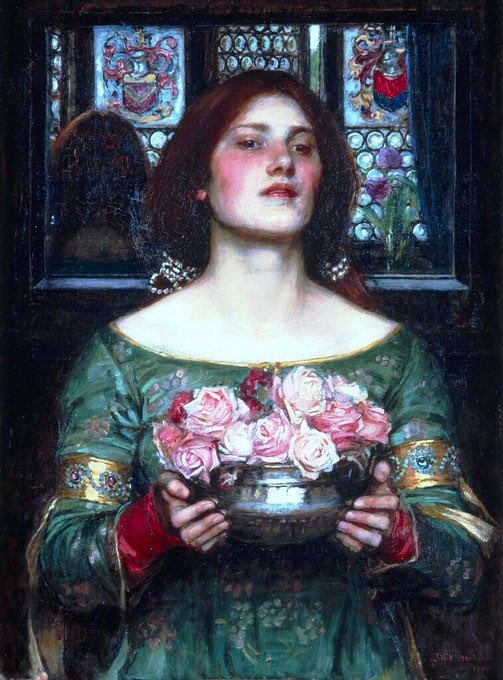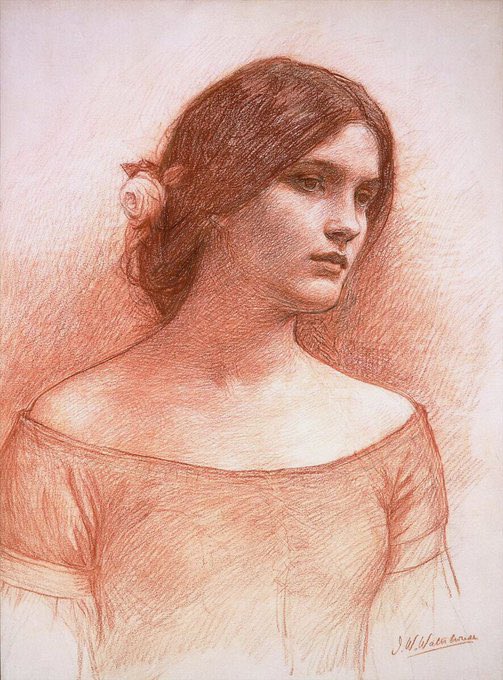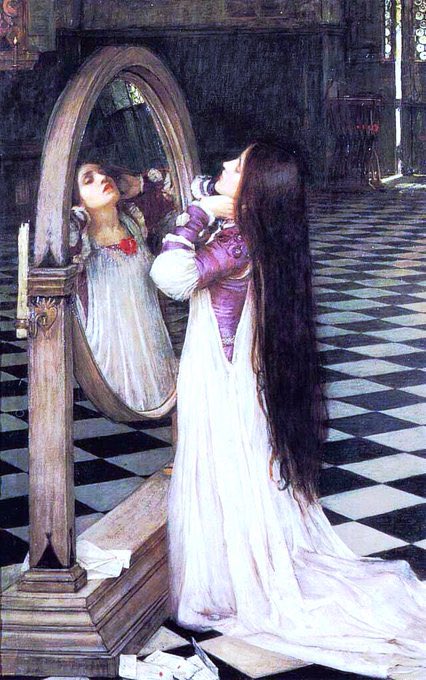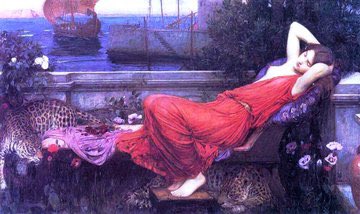Ophelia was a popular subject for the PRB & Waterhouse painted the doomed maiden at least three times - each stunning. Ophelia (1910), Sketch of Circe (c1911-14), The Charmer (1911) & A Song of Springtime (1913)
His mature images of women tend to be individual unlike his earlier female subjects. Even so they lack intensity & appear as actors playing parts. Gather Ye Rosebuds While Ye May (1908), Soul of the Rose (1908), The Listener (1909)
It’s interesting that his relatively rare male figures are more sensual than his female ones. Was this the reason his figures are so loathe to express authentic emotion? Head of a Girl (c1905), Lamia (1905)& Apollo & Daphne (1908)
Waterhouse was a gifted draughtsman as can be seen from the marvellous drawings that survive. Study for the Lady Clare (1900), The Flower Picker (1900), the Siren (c1900) & Windflowers (1902)
He later taught at St John’s Wood Art School. Mariana in the South (1897), Ariadne (1898), Awakening of Adonis (1899) & Destiny (1900). Unlike Simeon Solomon he did not explore his sexuality thru paint & his images seek beauty rather than truth.
We should probably think of Waterhouse’s art as mood music. Its point is it’s beauty - no more, no less. And it is ravishing. Ophelia (1894), The Lady of Shalott (1894) & Phyllis Waterlow (1895)
Donce Far Niente (1879), Flower Stall (1880), The Household Gods (1880) & Diogenes (1882). The influence of Alma-Tadema, Leighton & Moore is seen in these works
Initially he painted in the Neoclassical style. He exhibited at the RA from 1874-1916. His aesthetically pleasing work & romantic approach met with great success. After the Dance (1876), Sick Child (1877) & Remorse of Nero (1878)
Born in Rome to English painter parents he enrolled in the RA (1871)& exhibited at their annual shows. His interest was in Arthurian & Classical mythology. Undine (1872), Gone but Not Forgotten (1873) & The Unwelcome Companion (1873)
Thread: John William Waterhouse (1849-1917) was a late English follower of the Pre-Raphaelite movement. His romantic vision remains popular today & is amongst the finest Late Victorian art. Lady of Shalott (1888) is perhaps his most famous work.

































